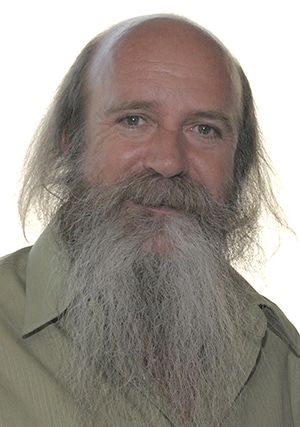Few contemporary artists have made more of an impact on the world of sculpture than Colombian sculptor Nano Lopez. His instantly recognizable “Nanimal” sculptures are collected around the globe, and he continues to innovate and inspire with his remarkable bronze work. With his imaginative bronze figures, Lopez creates amalgamations of folklore, science, industry, and nature.
Nano Lopez: Personal History
Nano Lopez was born October 31, 1955, in Bogota Colombia to an affluent and educated family that includes a great uncle who served as president of Colombia.
His grandmother was an artist who worked in ceramics and water clay, having a big influence on Nano. She encouraged her grandson at a young age to pursue art, and her sculptures and collection of art still inspires him to this day.
Nano found inspiration from his father, a chemical engineer and entrepreneur, when he would visit his father’s copper sheeting factory and see the beautiful patterns created by sulfuric acid and cupric nitrate crystals. Family trips to San Andres or other locations in South America influenced the young artist as well, whether it was fishing on the Amazon River, watching turtles or noticing the texture of leaves or nets.
Nano was recognized early in his life for his artistic talent when he was awarded first place in a municipal school drawing contest at the age of 5. Around the age of 15, Nano’s love of art grew and he began using wet clay he found at construction sites to practice his skills. By high school, he was making serious copies of the masters including Michelangelo’s sculptures and paintings. He realized that art was an absolute need and passion, and at toward the end of high school began to take university classes at night.
Style and Influences
Nano continued his upper division studies and studio work at the School of David Manzur, the Rembrandt Academy, and the National University in Bogota. In 1978, he traveled to Spain and began working for the sculptor Francisco (Paco) Baron in Madrid. While with Francisco, Nano carved marble, granite and fabricated in steel. He worked all three materials on a monumental scale. It was in Madrid that he began casting his own works in bronze and held his first single artist show. He also took the opportunity to visit Italy and see the sculptures of Michelangelo, his idol.
After several years of learning in Madrid, Nano traveled to France in 1980, where he furthered his studies and showed his work more often. He applied to study at the Superior National School of Beaux Art in Paris, where he was the top student to be accepted that year, and focused his studies in new materials, discovering the versatility of various casting media.
In 1981, he returned to Bogota to build a studio and put to use the methods he had learned in Europe. In 1983, Nano moved again this time to the northwest area of the United States. He began to work with Manuel Izquierdo, head of the sculpture department at the Pacific Northwest College of Art. During the following four years, he was employed by various bronze foundries in the Northwest, and further developed his techniques in welding, and tooling of bronzes. Additionally, he continued to learn and develop skillful and original uses of patinas.
Nano began his own business in 1987 in Walla Walla, Washington, model-making, reducing and enlarging maquettes to monumental sizes. There was a great demand for Nano’s talent by both artists and foundries. In 1991, Nano married fellow artist Mariya.
In 2001 and 2002, Nano designed, built, and moved into his custom building. It contains very high ceilings with skylights and 8,000 square feet of floor space. Nano’s attractive building is enhanced by artistic landscaping and a beautiful scenic pond that is Nano’s monument to nature. It now serves as his personal studio space.
By 2006, Nano became so successful in the production and marketing of his fine art bronzes that he no longer takes on the business of enlargements. This frees up his time for the creation of his own work. His “Nanimals” engage viewers of all ages and reflect a sense of playfulness, intense creativity, and wonder. For Nano, the entire sculpting process begins with conceptual sketches. He then creates a small working model in clay, and then will sculpt the piece into actual size. His process has been created into an infographic.
The combination of Nano’s classical training, experimentation with materials, and extensive experience, has led to the production of avant-garde art, which combines aesthetic considerations and rich textural surfaces. Nano’s work invites us to experience a range of emotions from joyful sense of wonder and creativity to deeply felt emotions relating to the human struggle.
To learn more about Nano Lopez, you can visit the artist’s website.




